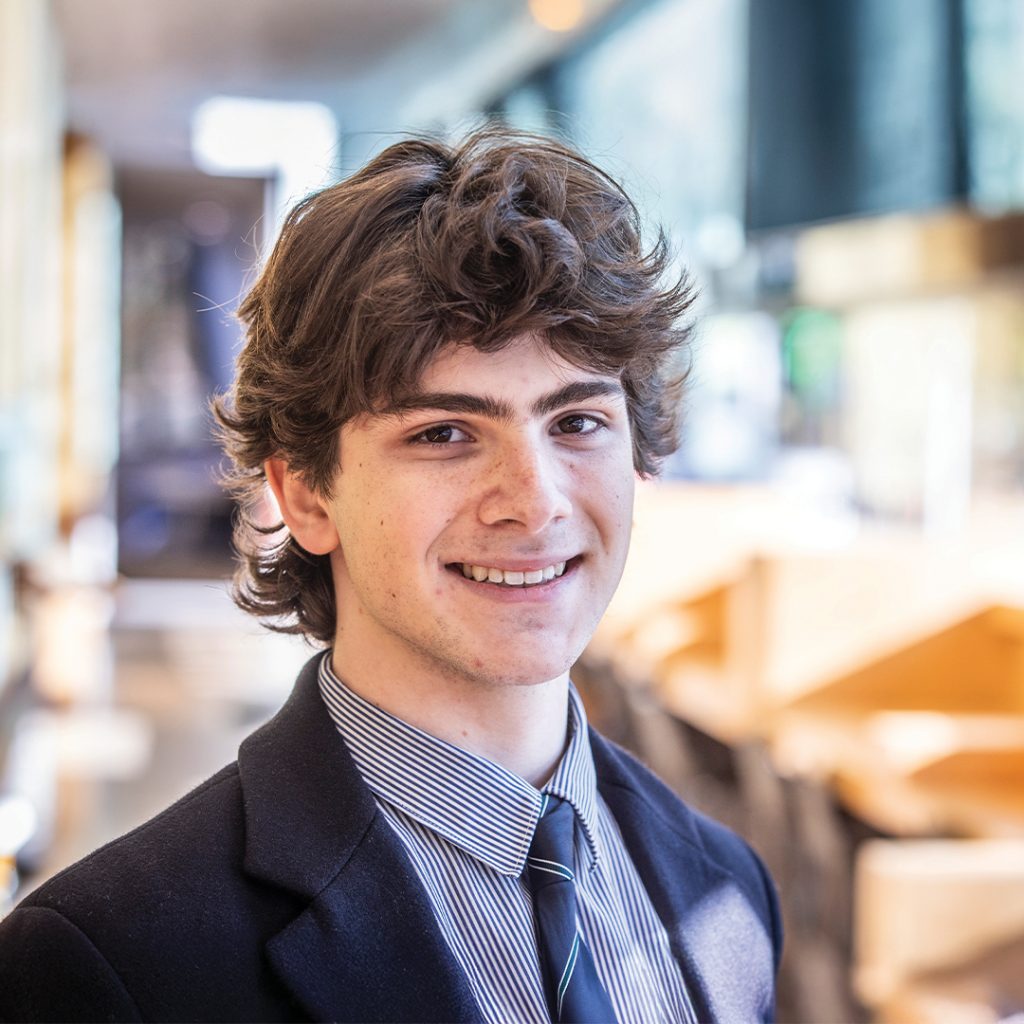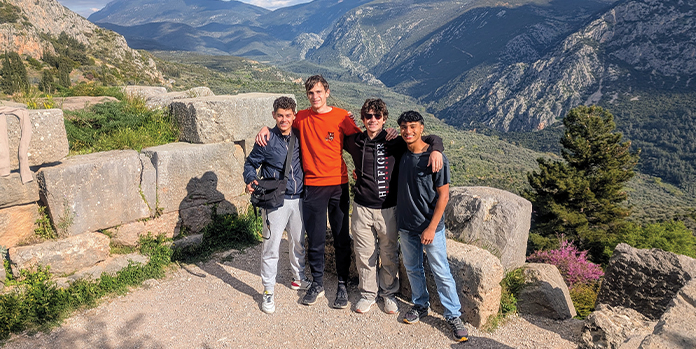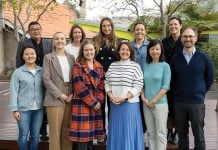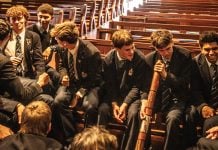During the 2025 Term I break, a group of 27 Year 10 and 11 students – some studying Latin and/or Classical Studies and others with an interest in those areas – set off on a two-week immersive journey into the Ancient Greek and Roman civilisations, visiting Athens, Rome and other historically significant Italian towns.
By exploring historical sites that offered a vivid window into the past, students gained insights into how these millennia-old cultures influenced the foundations of modern society, and deepened their appreciation for the enduring legacies of classical thought, architecture, politics, and art.
Here, Year 11 Classical Studies and Latin student, Arten Singer, describes his experience.
“Man is the measure of all things”…
proclaimed the ancient Greek philosopher Protagoras. The ancient Athenians embraced this idea, believing that truth and value are all determined through the lens of human experience. They pursued personal and societal advancement, and excellence in all measures, as far as was humanly possible at the time. As we walked the streets of Athens, the signs of the ancient Greeks’ immense capabilities and ambition were clear to us, even some 2,500 years later.
The Acropolis dominates the Athenian skyline, on which the Parthenon still sits in all its glory. A feat not only of art and engineering, but also of timelessness, the Parthenon was simply mesmerising – this structure we see in our books and screens came to life; and it was more splendid than anything we could have imagined.
Whether it was the Temple of Poseidon, poetically situated overlooking the sea; or Delphi, the site of the Oracle, nestled in the majesty of the Pindus Mountains, the ancient Greek ability to seamlessly intertwine the skill of the manmade with the beauty of nature was ever-present.
“What did the Romans ever do for us?”…
In short, a lot. Pompeii, Herculaneum and Ostia Antica – all beautifully preserved Roman towns – gave us a glimpse into ancient Roman daily life.
As we explored these cities, we stumbled upon walls adorned with political slogans condemning rival candidates, surgical tools reminiscent of those used today; there were even ancient fast-food places in every street!
The buildings were constructed using a refined, Roman version of Greek concrete. After all, the Romans loved taking aspects of Greek design and improving it for themselves.
Throughout our time in Italy, it was evident the Romans set the benchmark when it came to spectacles. When visiting the Colosseum, it was clear to us how advanced Roman spectacles, and their implicit messaging, were, even rivalling what we have today! Hosting gladiatorial fights, having exotic animals pop out of the floor or even simulating naval battles, the Romans truly had the means to put on a show.
Despite the golden age of the Romans having been 2,000 years ago, our experiences removed any idea of Roman civilisation being alien to us; bridging this gap as effectively as the viaducts that still stand today. There are so many aspects of the Romans and their society, some monumental and unmissable, and some very subtle, which hold their presence in our civilisation today.
The ancient Athenian philosopher Protagoras mentioned above suggested that education extends to the pursuit of excellence in education and civic life. He believed that by engaging meaningfully with the world around us through education and developing our sense of self, each individual can participate fully in society.
In that spirit, the Classics Tour invited us to think more broadly, develop our understandings of the world around us and understand more fully how the Ancient Greeks and Romans have shaped Western civilisation.




